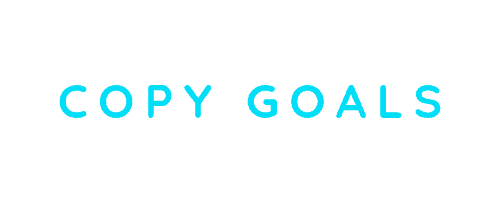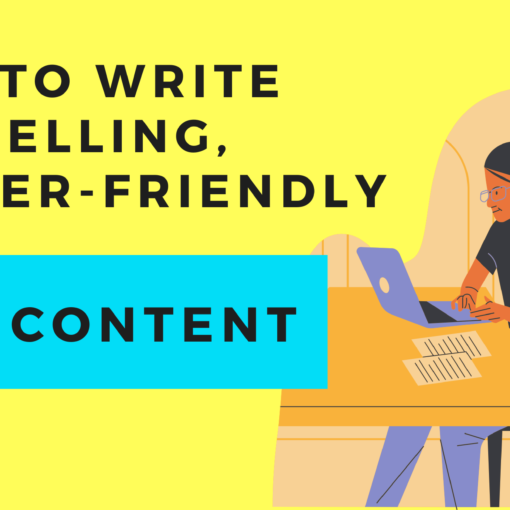Educational content performs better.
88% of top-performing brands put their audience’s informational needs over their sales/promotional message.
Now, if you want to acquire more customers, it seems counterintuitive to create content that isn’t driven by sales. But, the B2B and SaaS buyer journeys are more complex than that…
A sales pitch can actually be a turn-off, especially if somebody clicks on a post expecting to find useful advice or information. Intelligent B2B and SaaS audiences can see through your facade.
That’s why it’s better to be customer-centric.
And as you’re about to find out, one of the most effective ways to be customer-centric is to provide value to your audience through educational content.
CONTENTS
- What is Educational Content?
- What are the Benefits of Educational Content?
- How to Generate Educational Content Ideas
- Types of Educational Content (+Examples)
- Tips for Creating Educational Content
What is Educational Content?
Educational content is a fundamental and powerful type of content that seeks to inform and guide users. Examples of which are how-to’s and guides that provide the reader with advice they can take away and apply in real life.
The most successful pieces of educational content are:
- High in value
- Useful
- Actionable
- Comprehensive
What are the Benefits of Educational Content?
You’re no doubt wondering how educational content fits into your wider content marketing strategy. And why it’s such a “fundamental and powerful” medium.
Well, honey…
Educational content has a number of key benefits:
1. It’s Customer-Centric
Nowadays, your content strategy needs to be customer-centric. This is because customer-centric content creates a better user experience, benefits SEO, increases retention and more.
Educational content is inherently customer-centric as it’s created with the user in mind. You provide value or a solution to their pain points.
It’s not surprising then that 77% of B2B marketers use educational content to nurture their audience.
As you can see, educational content is the number two method, after email.
2. It Serves All Stages of the Customer Lifecycle
Firstly, you can use educational content as an authentic, non-salesy way to raise brand awareness. The B2B and SaaS buyer journeys are lengthy and require a lot of research and learning before prospects even consider making a purchase. So, having some strong educational content in place is essential.
For prospects further on in the buyer journey, you should seize the opportunity to educate them as to how your solution can help them. Robert McGuire at Convince & Convert puts it beautifully,
“Your target market can’t buy if they don’t know the solution exists, and they are unlikely to buy if they don’t understand how the solution works.”
Furthermore, you can utilize content to educate existing customers on how to get the most from your product or solution. And this will increase engagement and retention.
3. It Highlights Your Expertise
Educational content allows you to prove your expertise, which is another essential aspect of content marketing these days.
From an SEO perspective, you need to demonstrate E.A.T (Expertise, Authoritativeness and Trust) to rank well.
And from a customer acquisition perspective, you need to position your brand as an industry leader and your people as thought leaders. A library of quality educational content demonstrates your far-reaching expertise on a topic.
Now you understand why educational content is so important, how do you get started?
How to Generate Educational Content Ideas
There are all sorts of ways to generate content ideas. But, when it comes to educational content specifically, you need to focus on how you’re going to serve your audience.
Therefore, your jump-off point should be your audience personas…
1. Personas
Make a list of pain points for each of your personas.
Then list solutions to each pain point. And finally, work out how you can translate each solution into an educational blog post.
Let’s say you offer an SEO tool, your content ideation may look something like this:
Of course, there can be multiple solutions and therefore multiple content ideas for each pain point.
Rinse and repeat for each of your personas. And if you want to be extra clever, you can segment your lists according to the customer lifecycle stages, too.
This will help you to establish the objective of each post and guide you during the content creation process.
For instance, your consideration-stage content will likely have greater depth and incorporate your product explicitly. While your awareness-stage content is likely to be broader and more subtle in the product positioning department.
To come up with more pain points, you can talk to different members of your team. Salespeople can direct you to pain points or solutions that turn prospects into leads. While customer support will have excellent knowledge of the kind of repeat issues or queries that existing customers have.
2. Audience Questions
Another way to generate educational content ideas is through online research. Find out what questions people are genuinely asking or searching for online.
This way you can truly serve the needs of real members of your audience.
Google’s PAA box is pretty handy. Type in your main keywords and Google provides a list of related questions, like so:
Click on a result and the box expands to give more questions.
These questions show what people search for in relation to your key topics. Therefore, they provide plenty of educational content ideas.
Using the above example, you could create posts such as, “How to Measure Your Local SEO Efforts” and quite simply, “What is Local Optimization?”
To find real audience questions you can also look to forums, e.g. niche forums or Reddit.
Similarly, Q&A sites, such as Quora are useful. Type one of your main keywords in the search bar and browse the related topic pages:
You’ll see a stream of relevant questions from real people, for example:
And as this example shows, you’ll come across uber-specific questions like, “Should I create a second Facebook page for a second business location?” as well as broader questions, such as, “What are the top techniques for SEO?”
Your educational content should solve real problems that your audience has. Thus, you need to come up with content ideas which allow you to do that.
Types of Educational Content (+ Examples)
How-to’s and guides are some of the most popular and top-performing types of B2B content. For instance, B2B content with the word “guide” in the title gets 10% more backlinks on average than other types of content.
Yet, there’s a range of formats or frameworks you can use for educational content. And a good content strategy is a varied content strategy.
So, let’s take a look at all the types of educational content you can sink your teeth into, along with examples from brands that do it really well:
1. How-to
A “How-to” post is like a golden oldie for content marketers. I don’t need to explain too much here, as you’re likely familiar…
But, note that you can cover a broad topic with your how-to, as in this example:
Or something more specific:
2. Step-by-Step Guide
Step-by-step guides are beyond actionable. Plus, they’re likely to attract readers as they demonstrate a real, methodical approach to achieving their desired outcome.
You may want to choose an angle to make your post unique… Perhaps you have a new method, a simple method or a quick method.
Here’s a nice example:
3. Long-Form Guide
This type of guide may appear under different names, e.g. “The Ultimate Guide”, “The Definitive Guide” or “A Beginner’s Guide”.
No matter which way you frame it, you have to make this type of post super comprehensive. Imagine if a user clicked a headline that said “Ultimate Guide” and found a short, 3-point, 500-word blog post. They’d leave your site unsatisfied.
The cool thing about long-form guides is that you can combine multiple audience questions or issues into one hefty post, as in this example:
4. Q & A
This type of post gives you the chance to answer a specific audience question. You may want to choose a major question, like so:
Or, again, you can be more specific, especially if you’re going after long-tail keywords. Here’s an example:
5. Thought Leadership
Thought leadership posts work particularly well if you have a novel product or work with emerging technologies.
Clients tell me that their biggest struggle is getting potential users to understand why they need a product. Their prospects say things like, What I’m doing already works, so why would I change it?
The most simple, logical solution to this problem is to use thought leadership posts to educate prospects about the potential of what you’re offering.
Here, Algolia explores the capabilities of cutting-edge software:
6. Strategy List
Your audience is always going to seek out strategies and tactics. This kind of blog post gives users options that they may not have previously thought of. Or it shows them how to improve upon their current methods.
If you’re creating awareness-stage content, a long listicle will likely get more shares, links and so on. Why? Industry leaders like to share comprehensive resources.
Take a look at this example:
However, those later in the customer lifecycle are likely looking for more depth. So, choose fewer strategies and cover them thoroughly, like in this post:
7. Actionable Case Study
Generally speaking, many case studies wouldn’t be classed as educational content. Some brands use data or real-life scenarios to prove their chops and turn leads into customers, and rightly so.
But case studies can also be educational if you share your methods.
This post from Salesforce is less look at how amazing we are and more here are helpful tips we learned from experience:
Can your audience follow your method and achieve similar results?
8. Trend Report
B2B and SaaS audiences love trend reports. The thing is, people who are on their game, i.e. already knowledgeable about their industry or topic might not need a simple how-to.
Instead, they want to be educated about what’s new in the industry and what strategies they can use to increase performance.
For example:
9. Educational Hub
Hubs are #educationalcontentgoals.
I’ve seen more and more emerge in recent times. They’re not standard help or support pages, but rather collections of comprehensive, educational guides.
If you really want to demonstrate your expertise then this is how you do it.
Moz’s Learning Center is a prime example:
Now you have a ton of inspo for your educational content, what’s next? Actually writing the damn things…
Tips for Creating Educational Content
Here are some further tips to make sure your educational content resonates with your audience and keeps them engaged:
1. Make it Relevant to Your Target Audience
I’d just like to briefly re-emphasize the fact that your content needs to be relevant and useful to your target audience. This is easily achieved by analyzing your personas and researching your audience’s key issues and questions.
2. Share Your Unique Insight
At the risk of sounding like a broken record… There’s an overwhelming amount of content on the web, so you need to set yourself apart. If you can come up with a unique angle as you generate content ideas, A+ to you.
If the spark of inspiration isn’t there, pop your topic into a headline generator or use headline formulas to see if you can find a less common angle.
Sumo has a supremely useful headline generator. You input some key pieces of information and it creates engaging headlines for you:
Even if you don’t have a super unique angle, you should share your unique insights in every educational piece. Perhaps, you have personal experience of what you’re talking about.
In their post, “9 Research-Backed Customer Retention Strategies” HelpScout advises users to “stand for something as a brand”. They then share how they put this into practice IRL:
Or maybe you have access to original data to support your educational post. Your data might come from an original study or case study that you can link to. Alternatively, you can gather some fresh data for your blog post.
In the following, Buzzsumo describes a quick Twitter poll they ran, which adds a layer of unique insight to their post:
What a fantastic idea!
3. Make it Crystal Clear
Clarity is key when you’re trying to teach somebody something. First of all, you should use enough detail to fully explain your points, while avoiding fluff.
Google manages to fit in an abundance of actionable tips by leaving out the fluff:
Also, demonstrate any actionable steps or points clearly with real-life examples, screenshots or other visual cues, such as graphics.
CoSchedule does original graphics beautifully:
And make sure your layout is extremely clear, logical and easy-to-follow.
Here, MavSocial outlines their clear 5-phase plan before digging deeper:
Even the headers are descriptive, actionable and clear. Nice job.
It is possible to talk about complex topics in a simple way. If anything, you should strive extra hard to make your content easy-to-digest when you write about complex topics.
4. Share Useful Resources
If you want your content to be truly customer-centric, then you should give your audience as much help as you possibly can. This might be as simple as directing users to useful, relevant further reading on your blog or externally.
Also share resources, such as templates, checklists, swipe files and the like where they fit in nicely. Again, you can use external sources. But, it’s even better if you have your own materials, as in this example from FATJOE:
Don’t forget you can use this kind of educational material as a content upgrade to gain more email subscribers, too.
5. Make it Interesting
I had a teacher at school who was kind and, honestly, a bit wacky. But, we loved her and we loved her lessons, even if she did insist on playing the Sweeney Todd soundtrack from time to time.
The point is, education doesn’t have to be boring. Infuse your pieces with elements that make content more engaging…
Which looks different for different brands. Perhaps, your brand has bags of personality and a good sense of humor.
I really dig Typeform’s brand personality. They do a great job at storytelling and their actionable, valuable pieces have jokes. Take a look:
Or perhaps it’s more your style to keep readers engaged by being relatable and authentic:
Or, you express your confident enthusiasm to keep users on the page:
Naturally, your tone, voice and style depend on your branding. But whatever you do, make it interesting.
Final Word
A library of educational content positions your brand as the industry expert that also strives to put customers first. These are two of the most important qualities to have when it comes to content marketing nowadays.
To create pieces of high-value educational content, you must know your audience better than your own family (sorry mama). Only then, can you provide the insights that they truly need.
The first step is audience research. Find out what they need to know and what problems you can solve. Then produce strong pieces of educational content that provide all of the useful information and actionable advice your audience needs.



